The result of three years of research, a multi-disciplinary exhibition at a SoBo gallery stirs dialogue and conversation around the true interpretation of Mumbai’s green lungs located in its northern limits
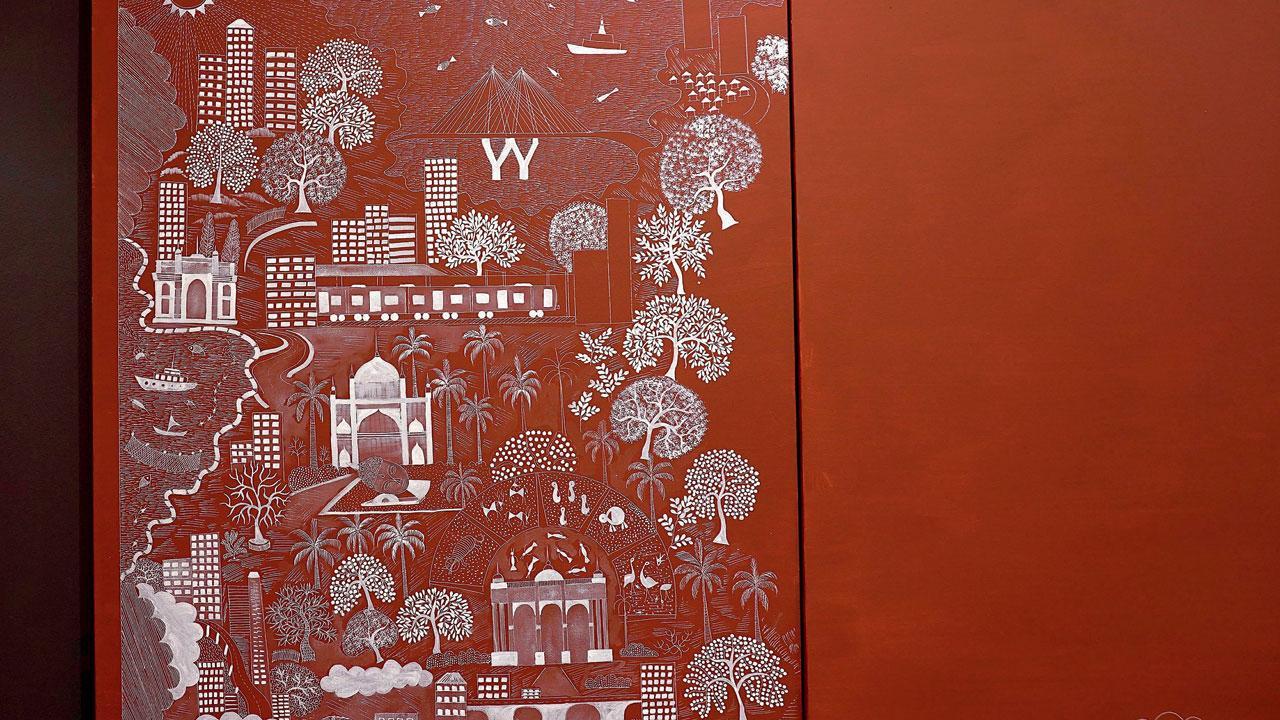
A panel from artist Dinesh Barap’s ongoing work at the exhibition
There is a surprising unfamiliarity this writer faces every time he encounters a map. It is, at once, both imaginative and factual. This thought was the first thing that struck this writer when he stepped into Jehangir Nicholson Art Foundation’s (JNAF) gallery at Chhatrapati Shivaji Maharaj Vastu Sangrahalaya (CSMVS) for a viewing of A Forest In The City. The exhibition brings to life an ecosystem, life and civilisation from within the Sanjay Gandhi National Park or the Aarey Forest.
ADVERTISEMENT
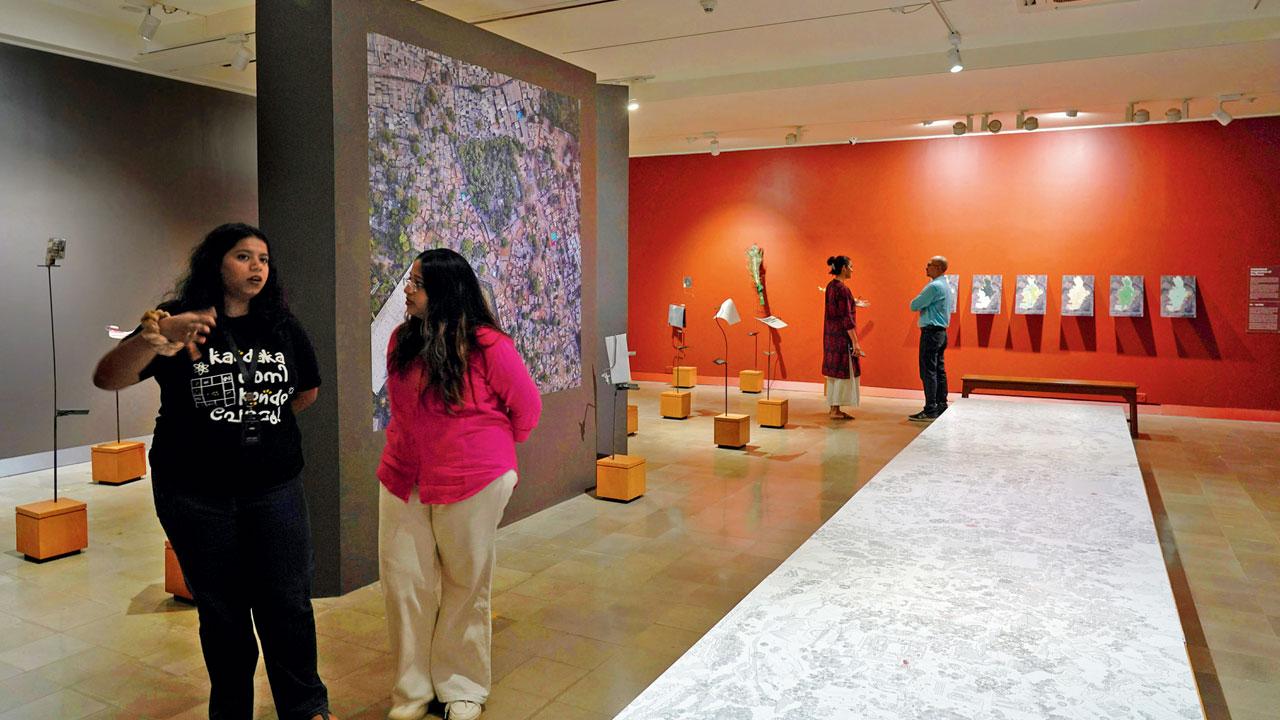
An overview of the gallery space with the hand drawn map by researchers
Formulated over three years of research from 2020, the exhibition was first displayed at IF.BE in Ballard Estate during the Kala Ghoda Arts Festival earlier this year. Led by Kamla Raheja Vidyanidhi Institute of Architecture (KRVIA), anthropologist Lisa Bjorkman, Sitaram Shelar of Pani Haq Samiti among a large team, the project is supported by United Kingdom Research and Innovation (UKRI). The exhibition is designed by Sonal Sundararajan with Rohit Kudale. It was during the Kala Ghoda Arts Festival that JNAF curator, Puja Vaish paid it a visit. “I looked at it as a display of anthropological and artistic depth and thought it fits in well with our idea of the gallery, and the museum space,” she shares.
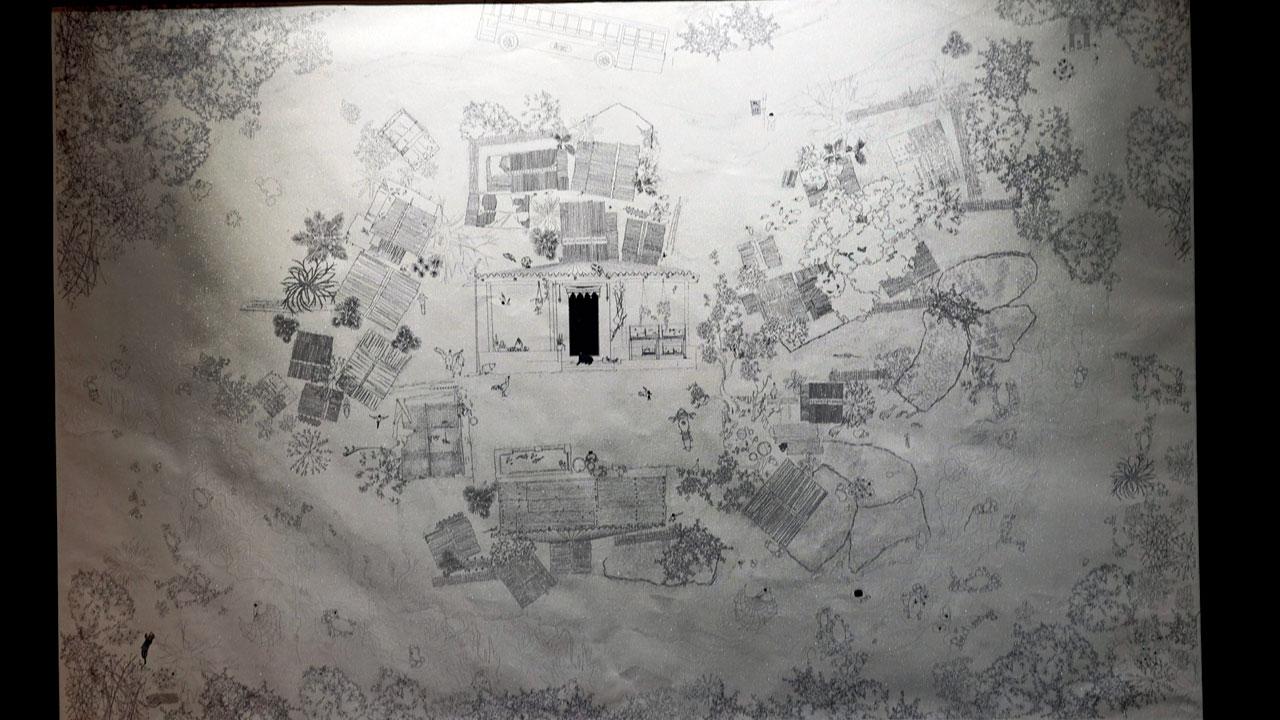
A closer look at the map. Pics/Aditi Haralkar
We peacefully walk through the gallery, devoid of crowds. The modern birds-eye view drone shots of the forest areas and technically accurate maps are a contrast with the hand-drawn maps and imaginative creations by architects and Warli artist Dinesh Barap.
Rohan Shivkumar, dean of Architecture at KRVIA explains that the project was designed as a clearing in the forest. “A metaphorical meeting place for multiple disciplines — art, architecture, music, and people — meet and initiate conversation,” he says. A clear example is a 24-foot hand drawn topographical map that is as much an artistic depiction of the forest, as it is geographically accurate. It is marked with touches of Warli inventiveness to indicate places of ritual, trees, borderlines and playgrounds.
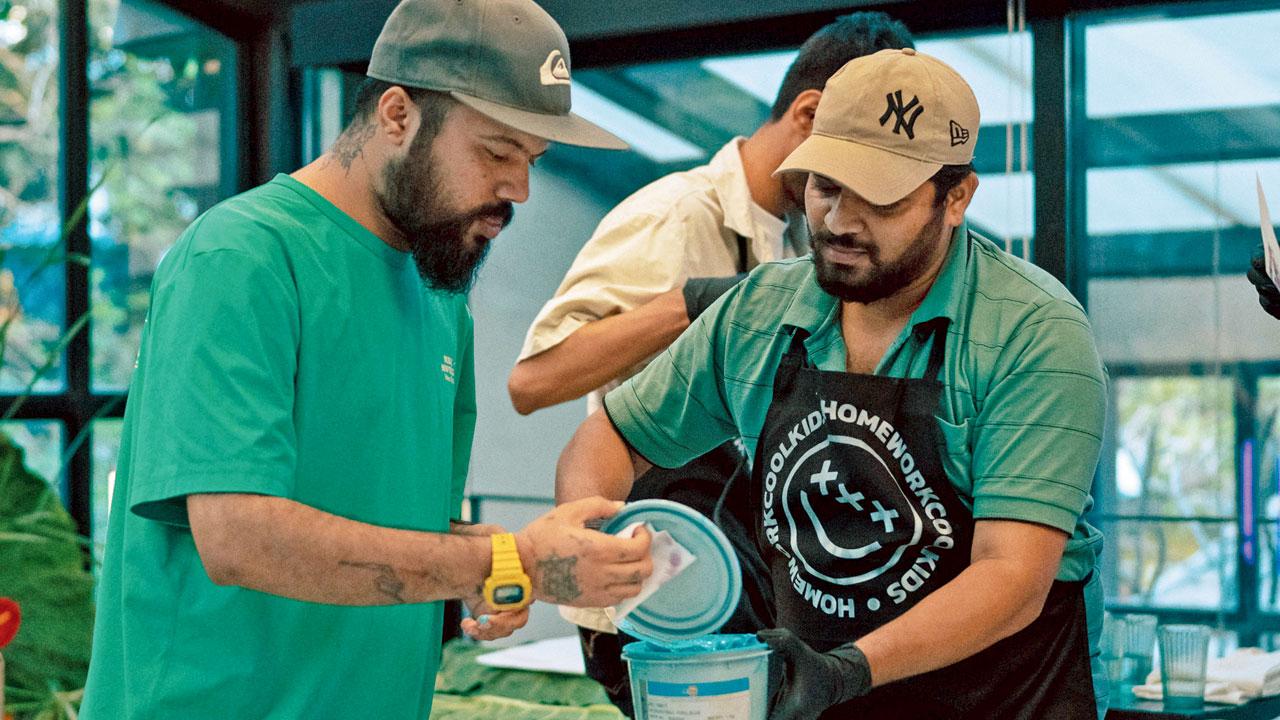
The writer tries out the VR headset that allows users to experience a bird’s eye view of the forest, as well as walk along with its residents through the region
The curators have also made a conscious effort to make the exhibition more interactive. The writer managed to take a peek at the VR (Virtual Reality) interface that allows users to view the forest area from close quarters. Designed by Ankush Chandran of KRVIA, the experience offers you a bird’s eye view as well as a walk through the forest providing an on-ground view of how residents live and view it. Chandran shares, “The mainstream ways of depicting spatial information through maps is a little problematic because not everyone can understand real-life implications of lines on a map. Overlaying all of that in an immersive environment over a 3D model of the forest and allowing people to interact with it seemed more intuitive.”
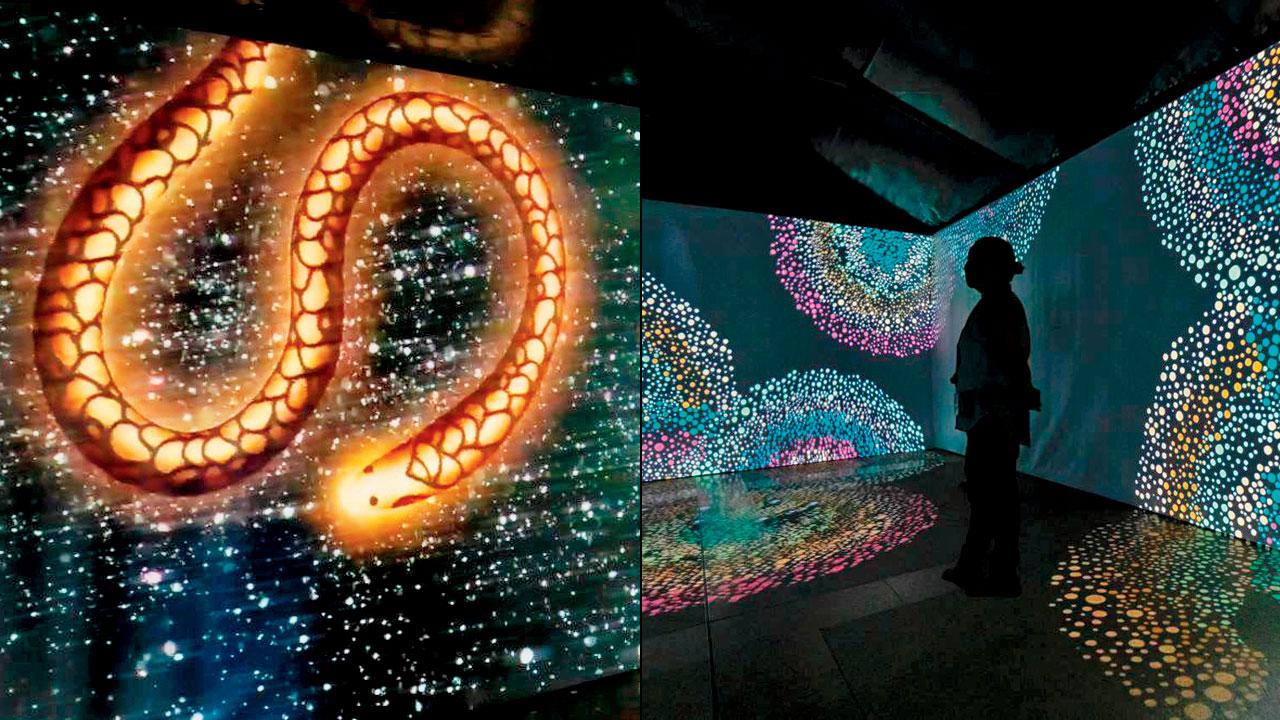
The maps highlight multiple surveys by various state agencies that shift and change the boundaries of the forest in the city over time, sometimes wiping out several square kilometres
This is an example of the conversations that the exhibition seeks to prompt, especially by bringing it to the museum space. While the exhibition will include walkthrough sessions and workshops till July, Shivkumar shares that they will also be exploring ideas to take the exhibition to schools and architectural colleges to further discussions among students.
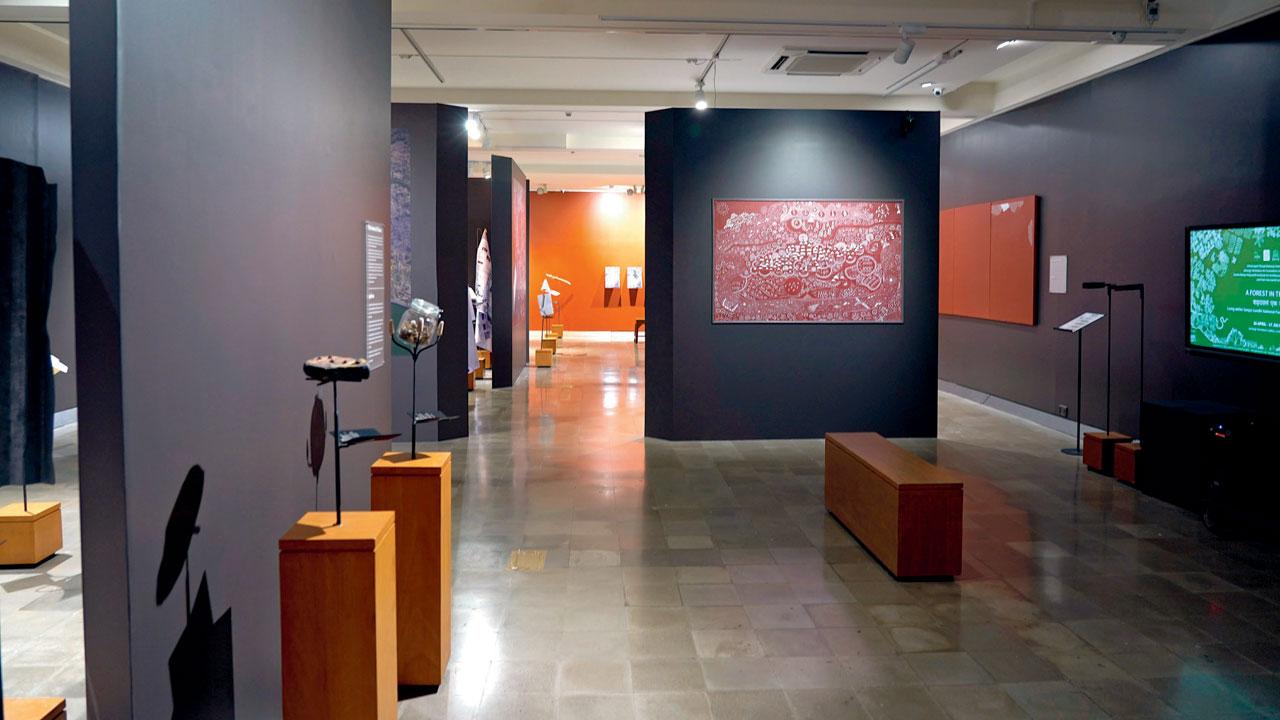
An overview of the gallery space with an artwork by Barap
This sentiment is embodied in the objects that line up The Forest of Claims section. From the tarpa, a musical instrument central to Warli life; an electric meter; or a hand drawn map by officials to mark a cultivated section of the forest; these objects speak of a dissonance between the urban need to define a space, and how generations of the residents view the forest.
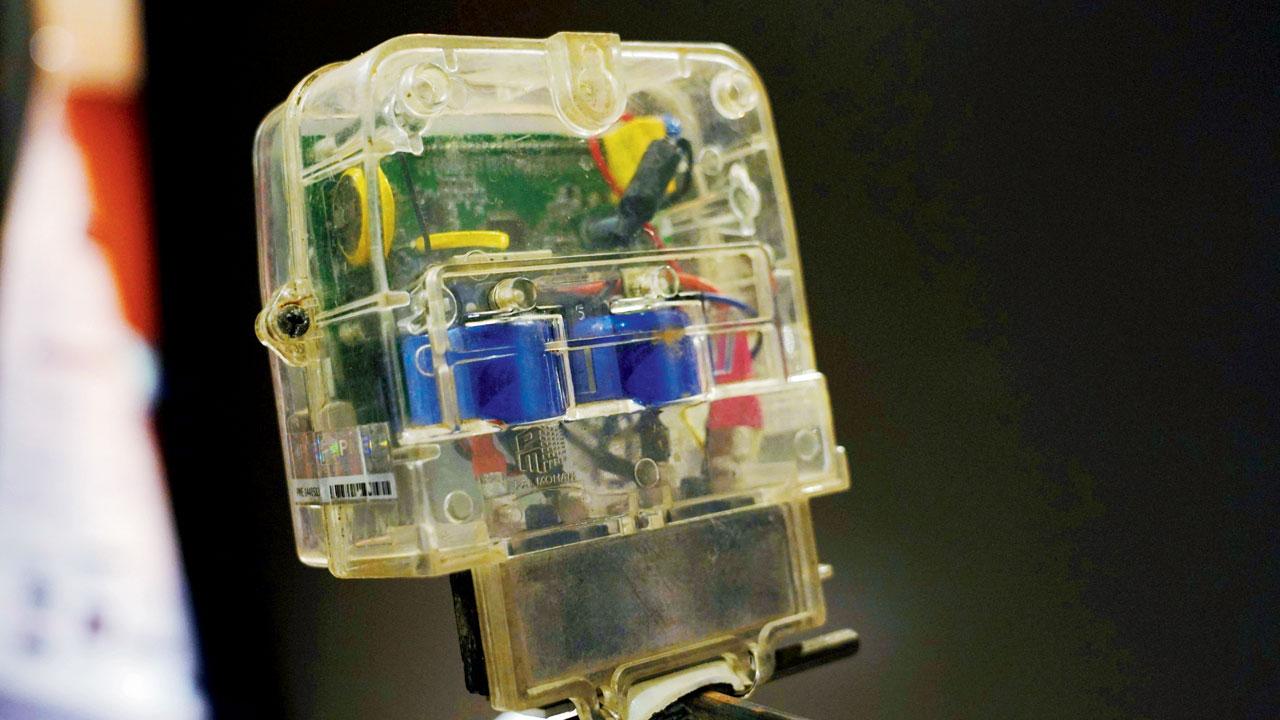
Central to all of it are the works by a resident Warli artist Barap. He is working on a 24-feet long panel that will conclude with the exhibition. “The work will be a response to the exhibition and his experiences,” shares Vaish, adding that it will be later acquired by the gallery for display.
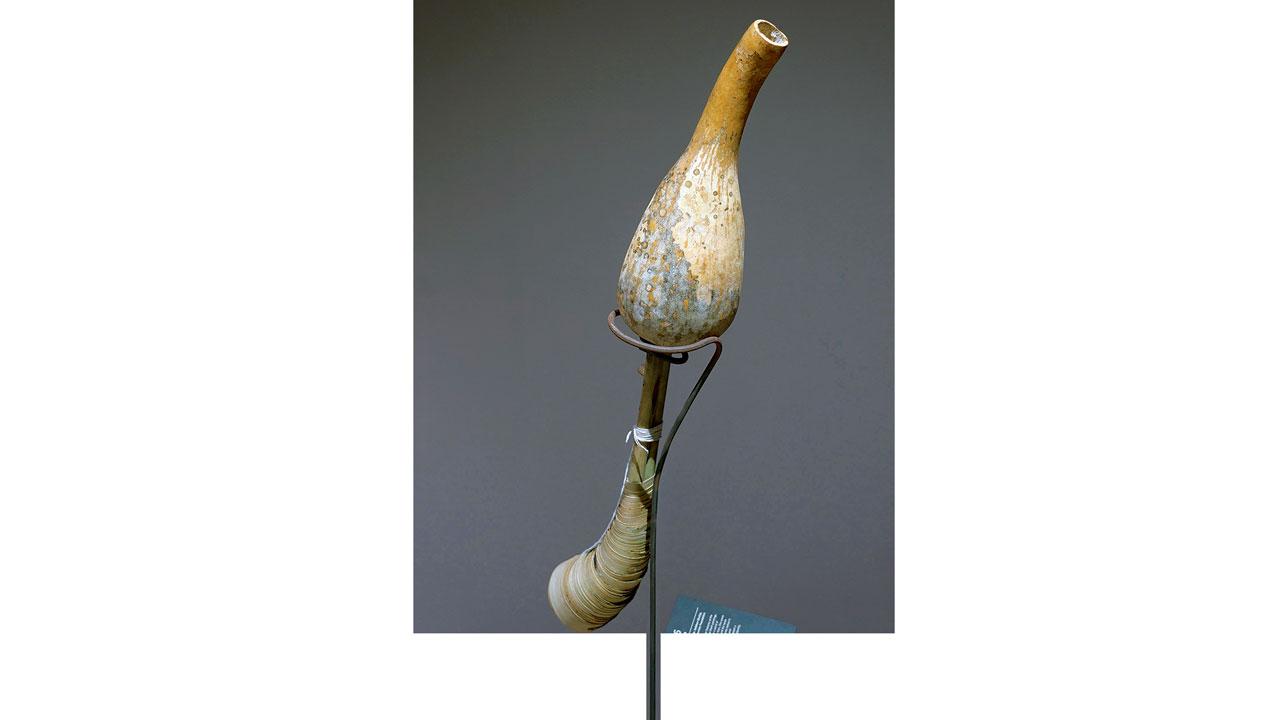
An electric meter; tarpa, a musical instrument and an exotic invasive bamboo species represent objects that explore how the community claims, and adds meaning to the forest space
Barap has already begun his story with the urban jungle of Mumbai with a local train, the Gateway of India, its beaches and fishing villages and CSMVS itself, finding expression in Warli style. It seems the perfect reminder to get back into traffic as we head back to the newsroom. From one jungle to another.
 Subscribe today by clicking the link and stay updated with the latest news!" Click here!
Subscribe today by clicking the link and stay updated with the latest news!" Click here!







